‘One of the most amazing spaces in London’: Two Hogarth murals, inside an 18th century London hospital, are to go on public display for the first time
St Bartholomew's Hospital’s north wing is to open as a visitor attraction and events space — while the rest of the hospital will continue to operate as normal.
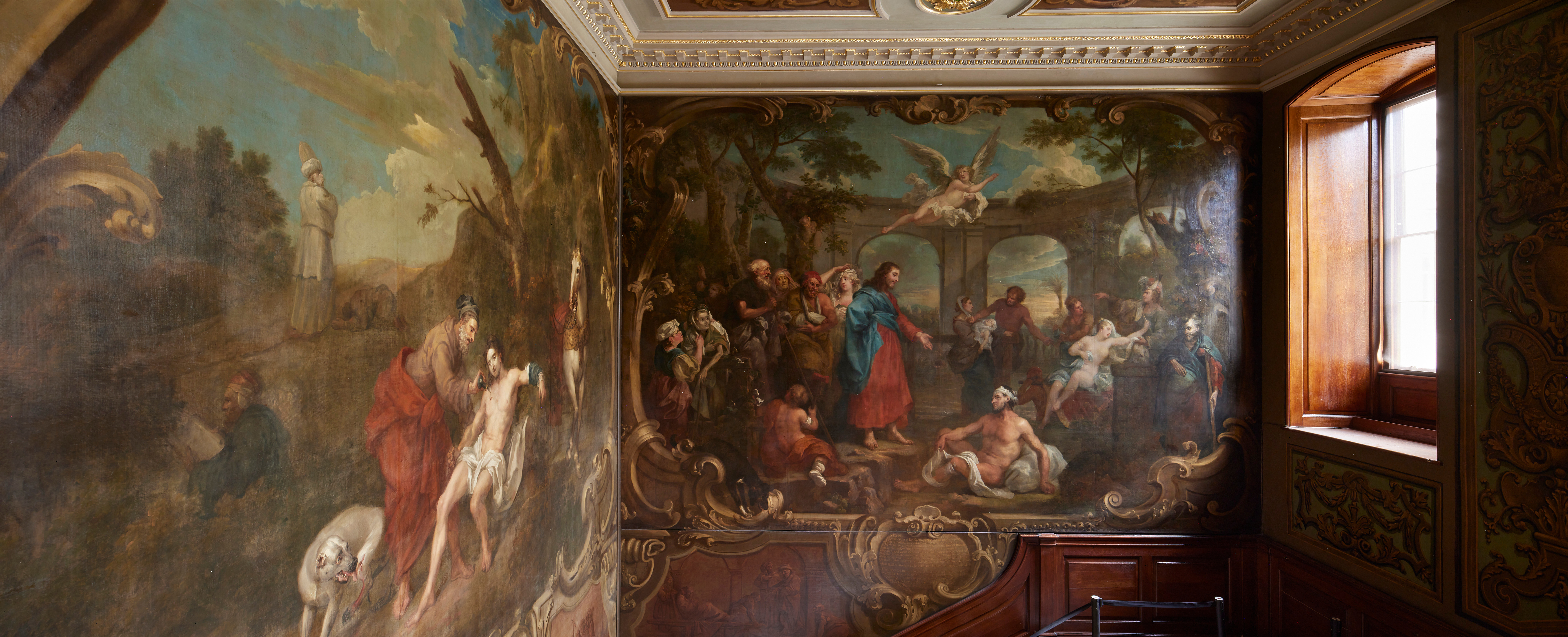

Hospital art is never really very good. It’s usually something positive yet vaguely lacklustre that reminds you of a computer screensaver — a sunset, a fruit bowl, a view of the ocean. It is never enough to hold the eye for more than a mere second, nor distract oneself from the impending unpleasant procedure or diagnosis one is about to receive. Not so at St Bartholomew's Hospital in the City of London, which has long featured two of William Hogarth's works that can only be described as floor to ceiling masterpieces.
After a £9.5 million restoration project, both the Great Hall and the staircase that features the Hogarth murals are now open to the public for the very first time. Separate from the still operational hospital, the Grade-I listed 18th-century building will be free to visit and will host a programme of cultural events throughout the year as well as being a hireable corporate events space. It is owned by Barts Heritage, and all profit made by the building will go to funding their work.
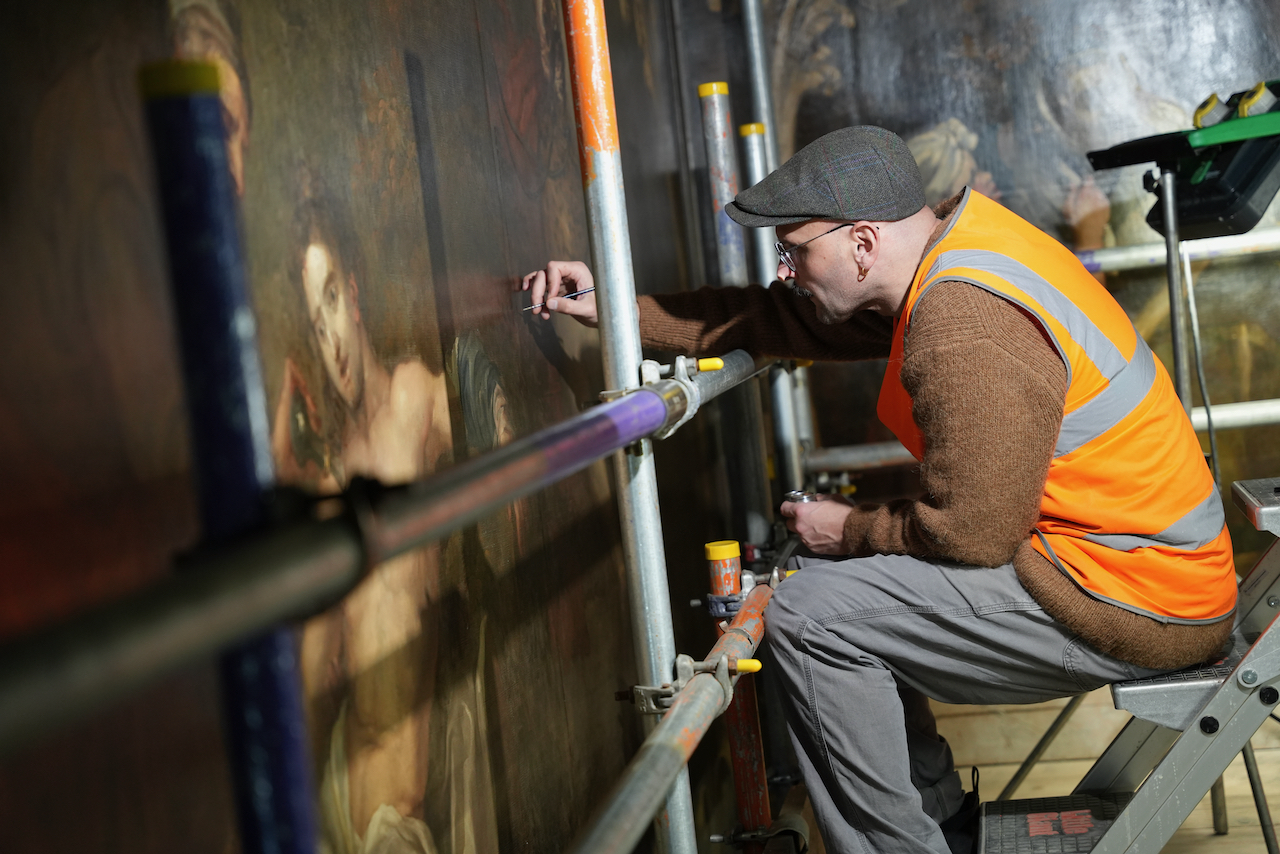
Restoration works being carried out on one of the the Hogarth murals...
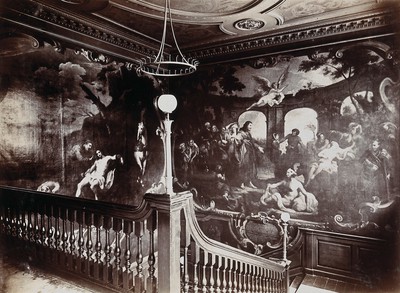
and what the staircase used to look like.
It opened for the first time on Monday after a two year closure and when I visited it took my breath away. Not only that, but it smelt amazing too. ‘That will be the wax,’ Will Palin, the CEO of Barts Heritage told me as The Pool of Bethesda and The Good Samaritan loomed over me in all their glory. It is clear no expense has been spared in restoring these works to their original splendour.
Four hundred people visited on the first day and they all had the same reaction. 'There’s a good buzz to it,’ Will said. ‘Lots of staff from the hospital came. It was a real feeling that they were getting ownership back of the space.’ Perhaps too much ownership; I noticed on my visit that already one of the delicately repaired grates on the window sills had received a rather noticeable dent, likely from a rather too enthusiastic visitor who had chosen to perch on it while posing for a photograph. ‘Dust control is also still a problem,’ he added, wiping particles from the floor with a rag sporadically as he showed me round.
The Great Hall features the names of 3,000 historic benefactors of the hospital and is an impressive visual representation of all those who pledged to help the patients that were once treated in the wing. It also features an incredible window of stained glass and an ornate gilded ceiling that was designed by Jean Baptiste St Michell, his only work in England.
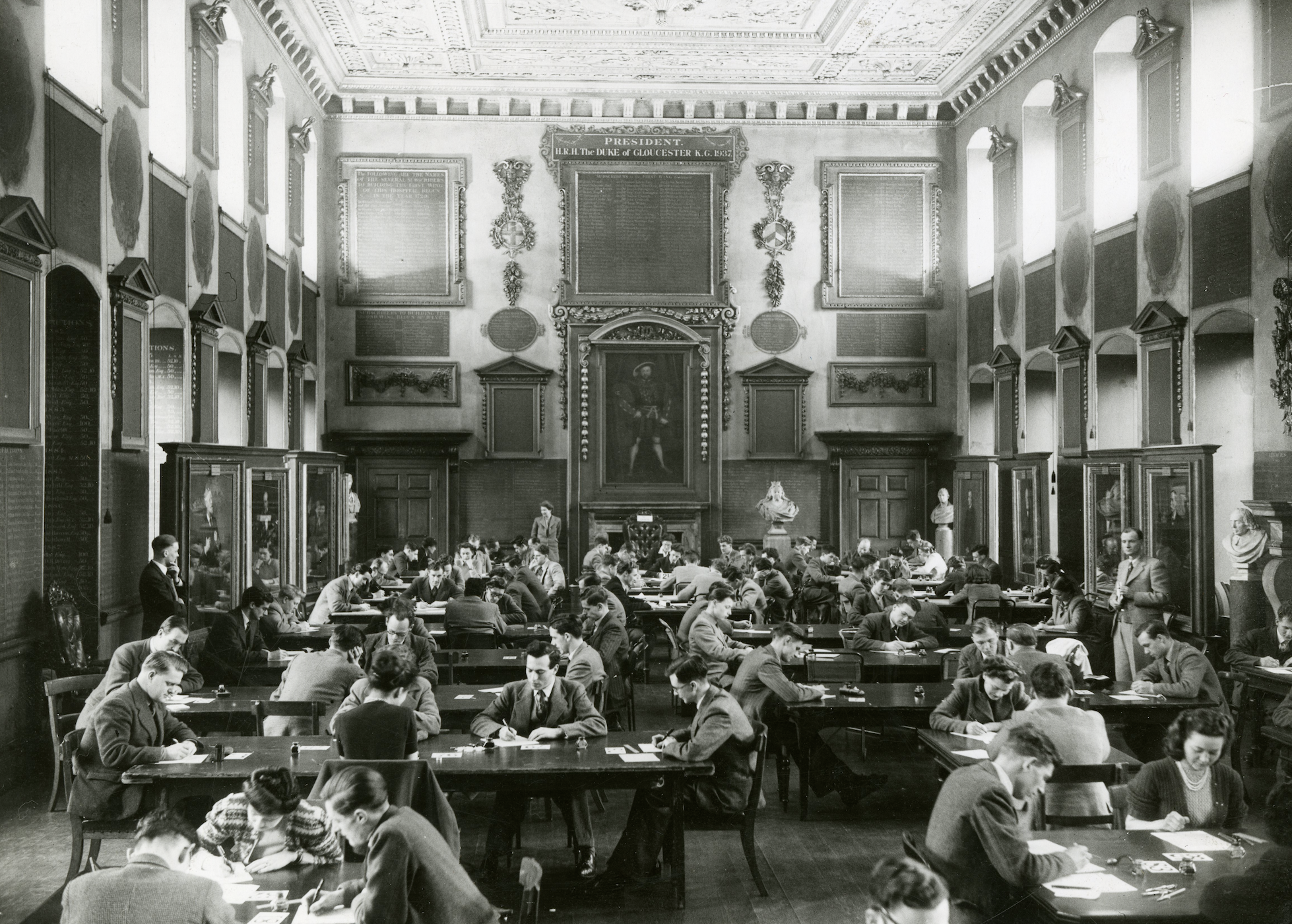
Students in the Great Hall sitting MB Examination in 1949.
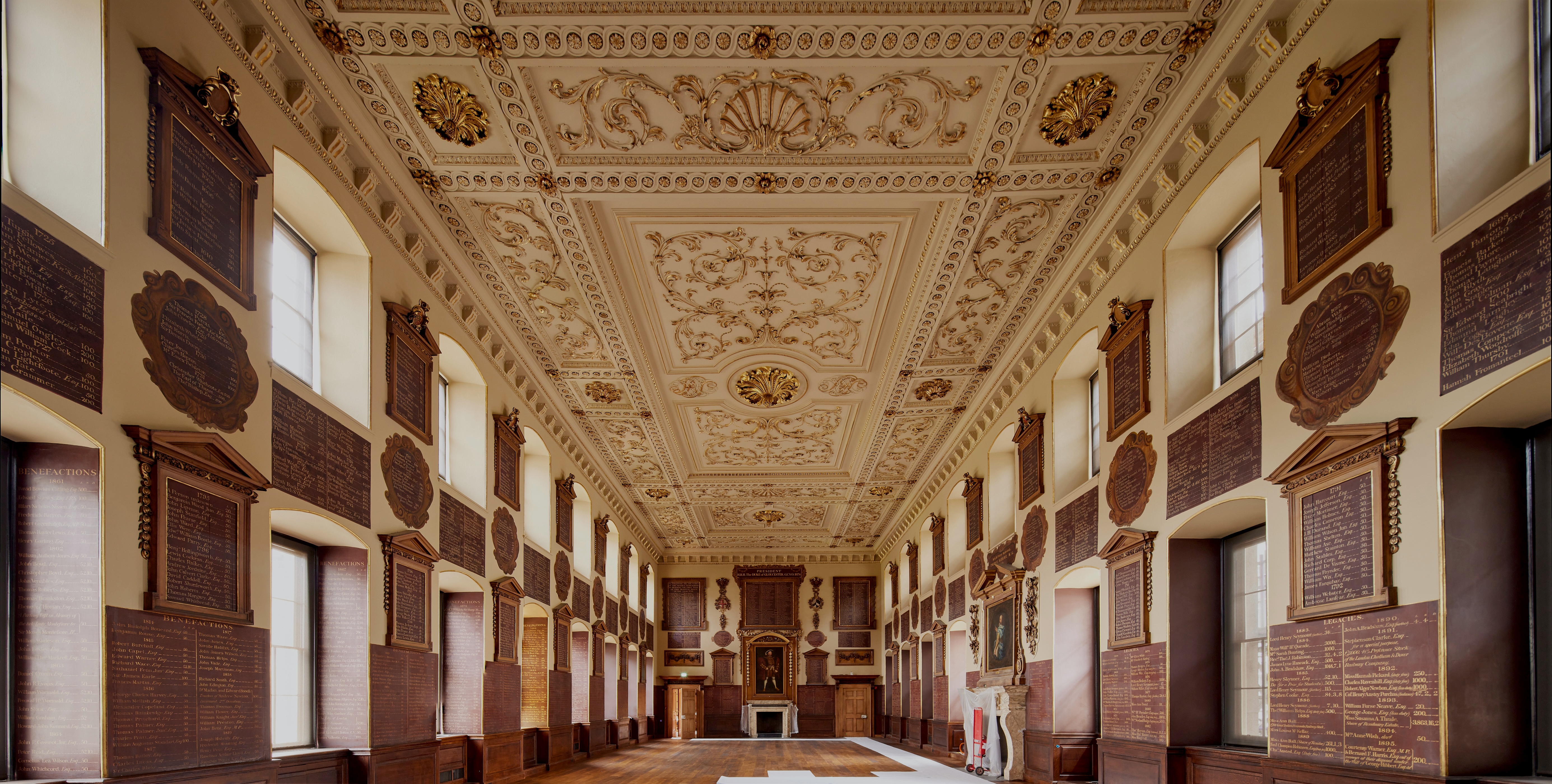
And now.
‘People find the contrast [between the wing and the working hospital] unusual, which is what makes it so special,’ Will said. ‘The old and the new facing each other across the courtyard is a curious thing.’
‘Working on a major project within a working hospital was interesting,’ he added, when I asked about the challenges that came with the project. ‘We approached this as a project to heal the building — you can see it as a sort of patient.’ Restoring it posed further challenges as the floor of the Great Hall posed the risk of collapsing so scaffolding had to be fed through the windows from the outside of the building in order for the work to take place.
Exquisite houses, the beauty of Nature, and how to get the most from your life, straight to your inbox.
The journey to opening has been a long road, starting in 2020 with fundraising efforts and including a year-long shift by a highly skilled team of four conservation painters — one of whom was an apprentice. Stephen Paine of Paine and Stewart Limited headed up the operation.
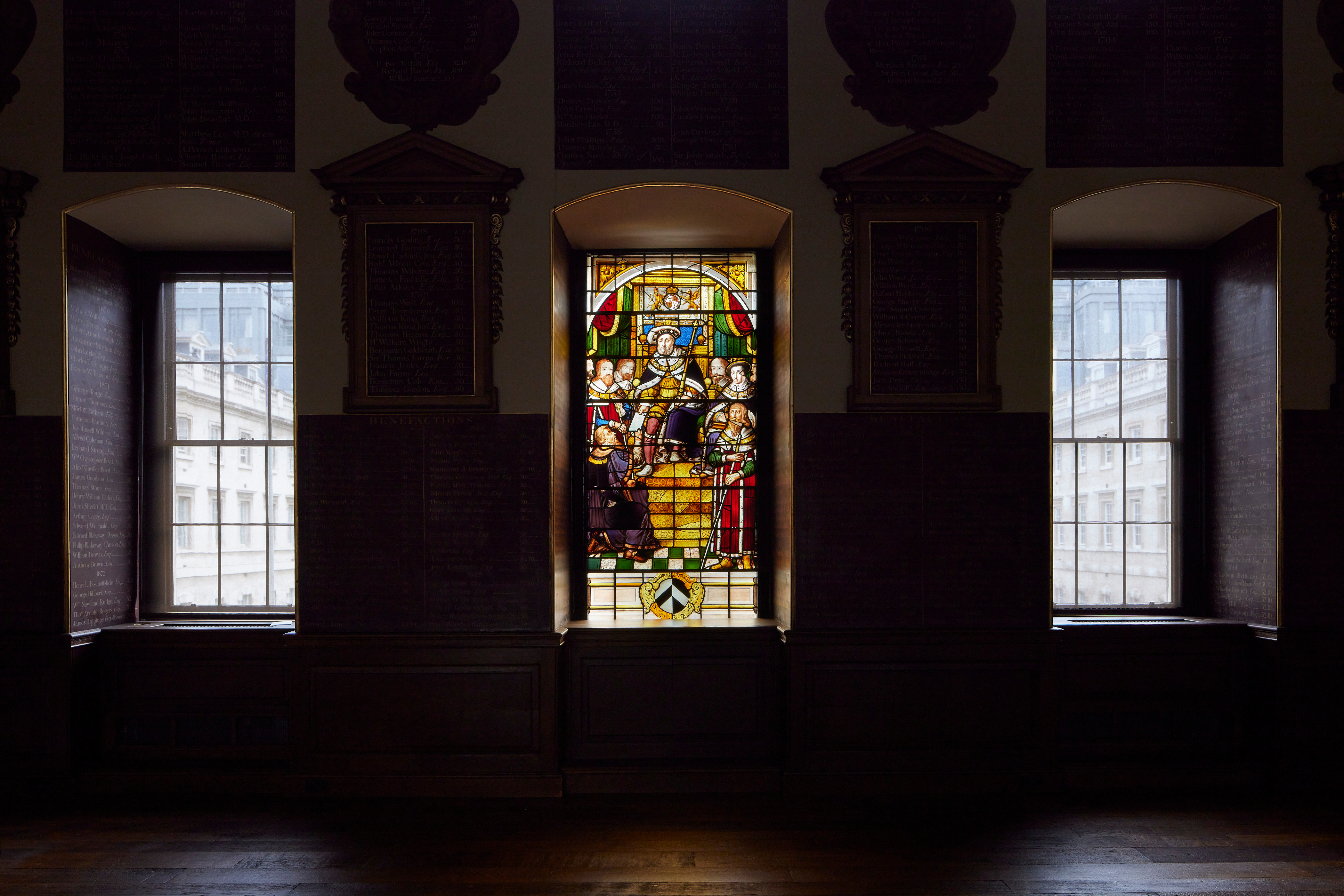
Details in the Great Hall.
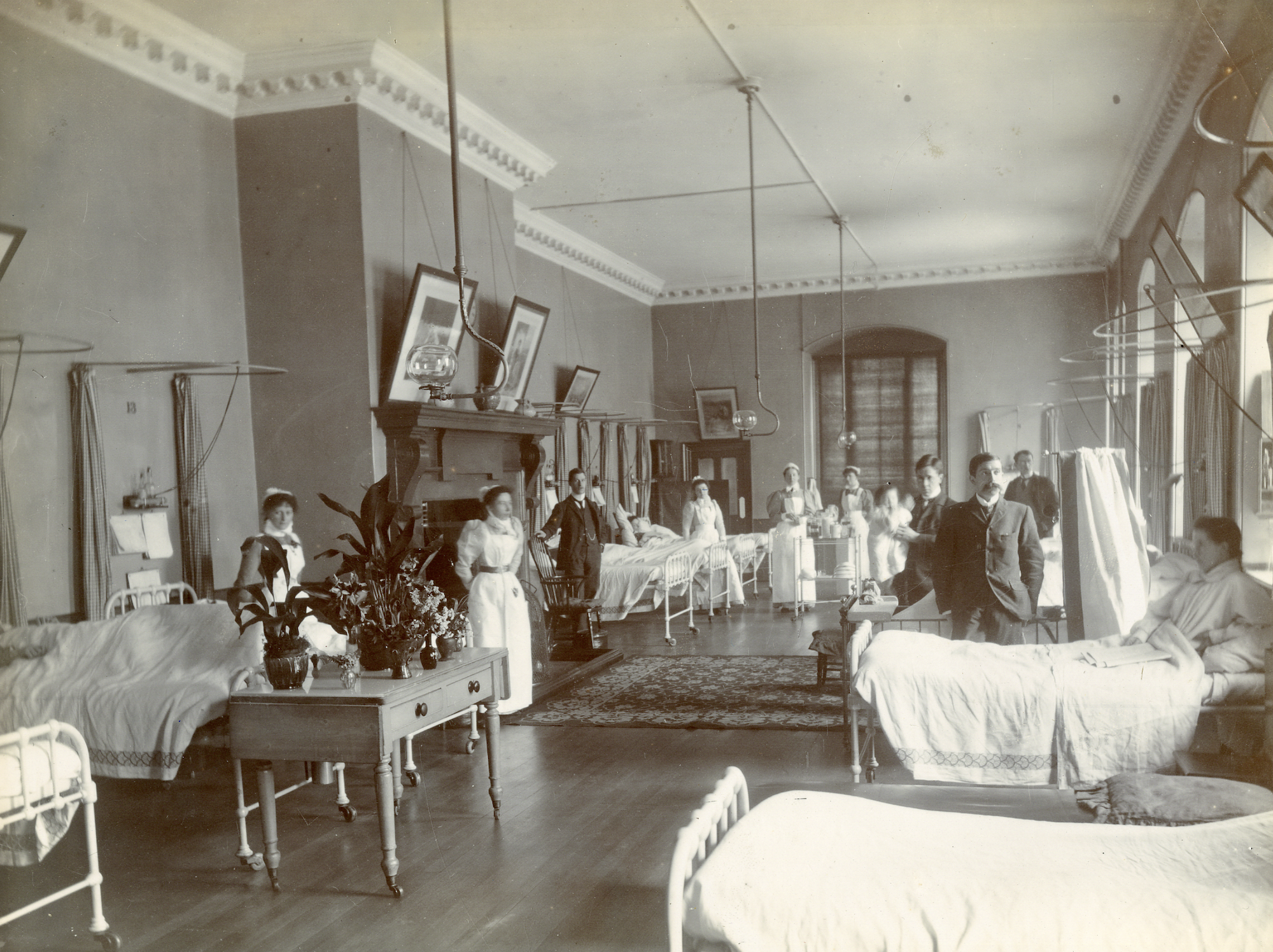
The south wing of the main hospital in 1899.
‘I'd been an admirer of these extraordinary paintings for a while,’ he said, describing the great sense of ‘nervous excitement’ he felt when embarking on the project. ‘It took a long run-in period to fully understand the paintings and how to treat them,’ Stephen says, despite being used to handling artworks on a gigantic scale (he has previously worked on the pieces inside the Old Royal Naval College in Greenwich). ‘It was a highly important painting with international significance — so that was different,’ Stephen says, adding that structural issues with the stairs meant the team could only work two at a time due to limits with weight bearing. Additionally, the art’s significance meant the progress could not be rushed: ‘The Hogarth was naturally meticulously worked on at a very very gradual pace.’
The restoration also revealed things about the painting that had been somewhat of a mystery. One figure in the painting had always been described as a sufferer of jaundice, but the team had no idea why, until the cleaning process revealed that the whites of her eyes had actually been yellow all along.
'Derided and dismissed for centuries ... these wonderful paintings can now take their rightful place in the history of European art'
Dr Jacqueline Riding, art historian
Stephen hopes the restoration will help draw attention to the artist, as well as the building. ‘The world is yet to realise what a fantastic painter, rather than a great social commentator, he was,’ he said of Hogarth.
Dr Jacqueline Riding, an art historian who specialises in the work of Hogarth and a contributor to Country Life said: ‘Derided and dismissed for centuries, by art critics and art historians alike, these wonderful paintings can now take their rightful place in the history of European art. They reflect Hogarth’s extraordinary variety, realism and humanity: the missing link between his celebrated Harlot’s and Rake’s Progresses and his active support for England’s first Foundling Hospital.’
Robin Simon, the author of Hogarth, France And British Art: The Rise of the Arts in 18th-century Britain called it 'a great moment for the appreciation of historical British art and its history'.
'I think everyone will find seeing the Great Staircase paintings a thrilling and moving experience,' he added. 'The compositions show so many sides of Hogarth: his sheer ambition in painting on a scale he had never worked on before; his humanity; his amazing capacity to characterise individuals, and in this case accurately to record specific physical afflictions that he evidently studied in Bart’s hospital, where he knew the physicians and surgeons and of which he became a governor [and] he painted these lovely things for free — What a man! What an artist!'
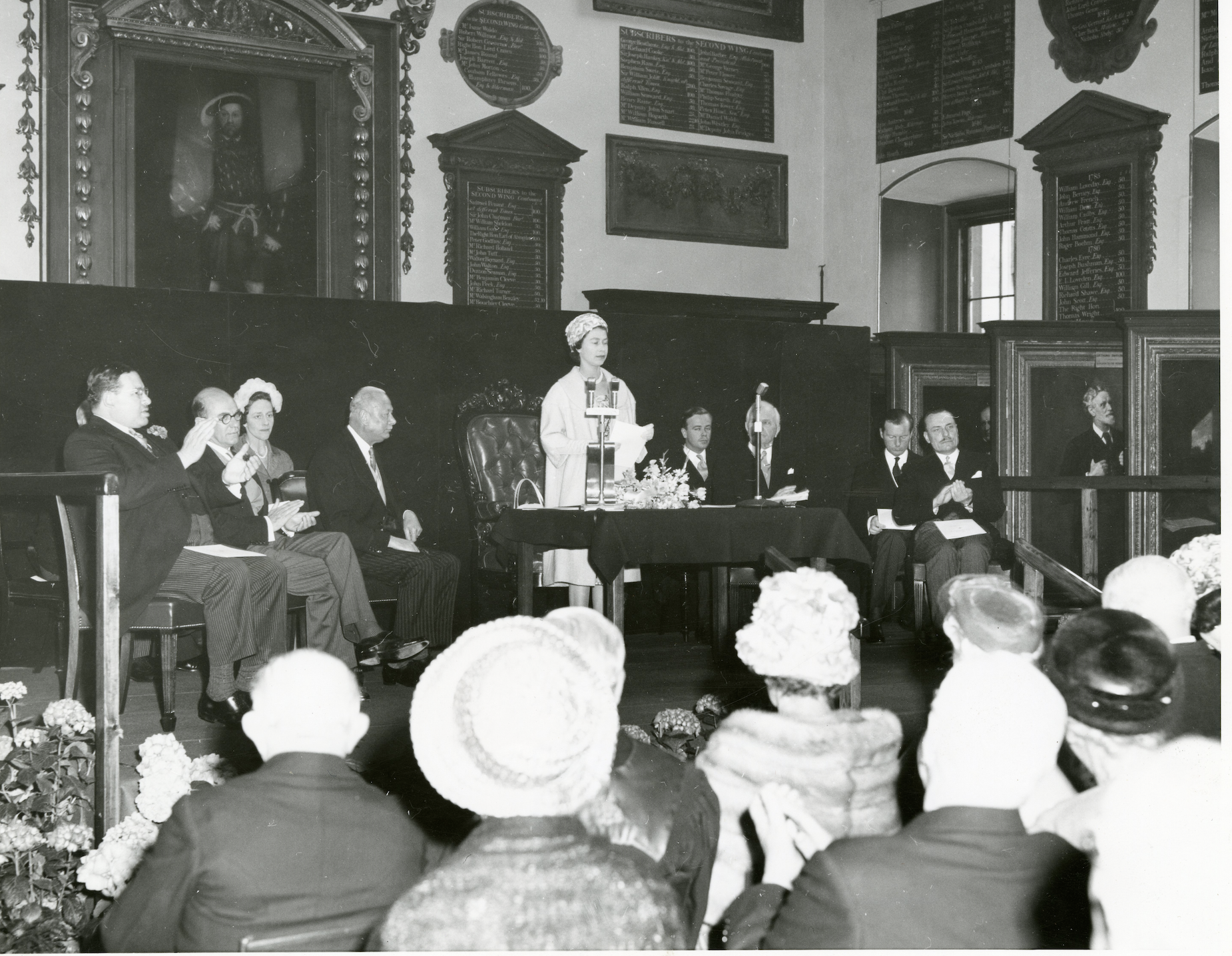
Queen Elizabeth II applauded in the Great Hall, 1961.
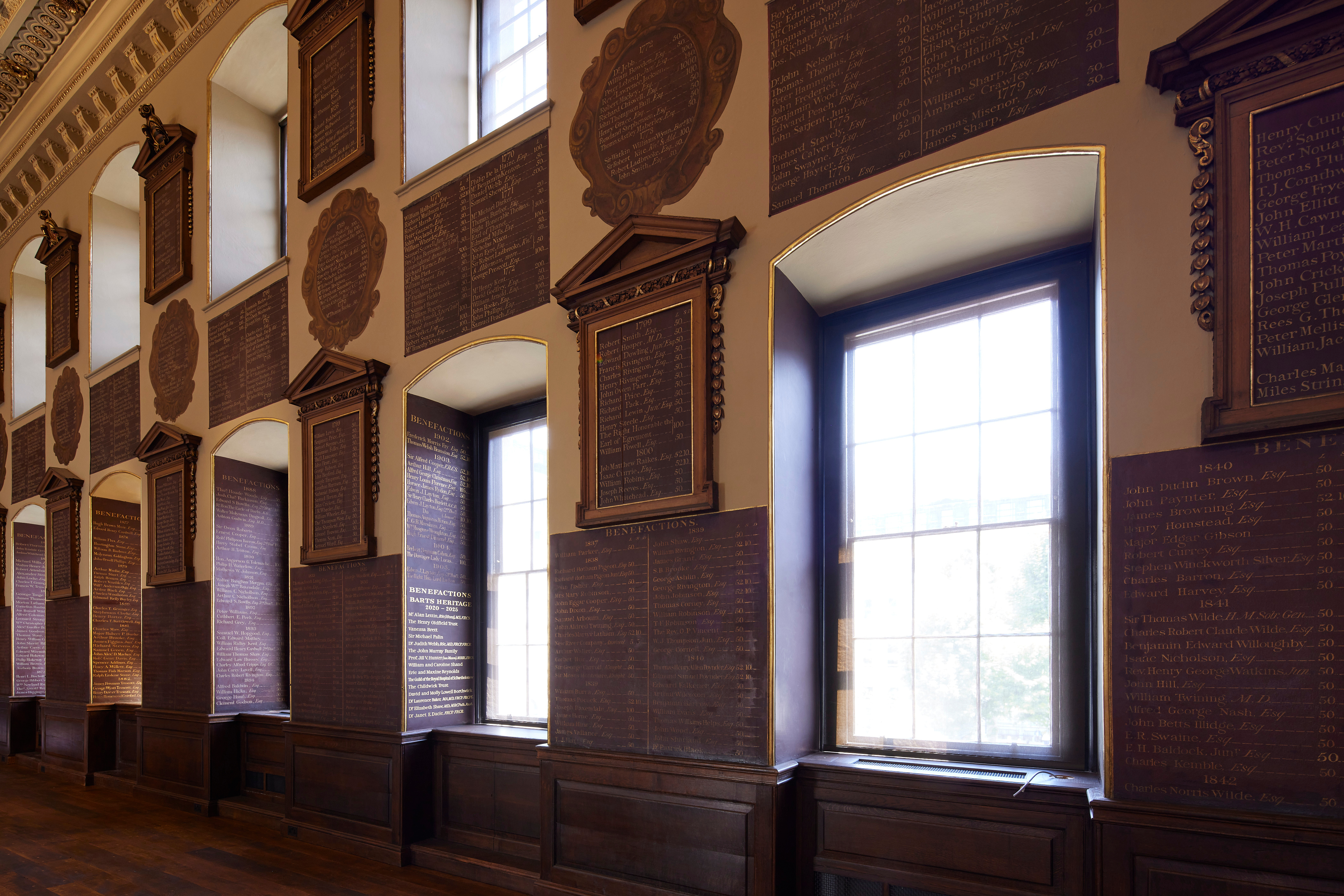
The wing's past donors are showcased on its walls — and they are numerous.
Hogarth offered to paint the Hall and staircase for free in order to beat his rival painter, Jacopo Amigoni from Italy, to paint the building. Designed by James Gibbs, the wing has not been regularly accessible since it was built nearly 300 years ago, in 1732. Then its purpose was to help run the hospital by raising money, but it fell into decline. The restoration works were supported by a grant of £5.3 million from The National Lottery Heritage Fund. The exterior of the building also required repairs to the roof, stonework and railings — not to mention more than 160 sash windows. The public were able to visit prior to the restoration, but their access was limited, mainly staff access and occasional heritage tours.
Now they can come and see Hogarth's works for themselves for free, on the two days the building is open each week. A donation is optional, and the proceeds will be used to fund Barts Hospital Trust’s future works.
Lotte is Country Life's digital writer. Before joining in 2025, she was checking commas and writing news headlines for The Times and The Sunday Times as a sub-editor. She has written for The Times, New Statesman, The Fence and Spectator World. She pens Country Life Online's arts and culture interview series, Consuming Passions.
-
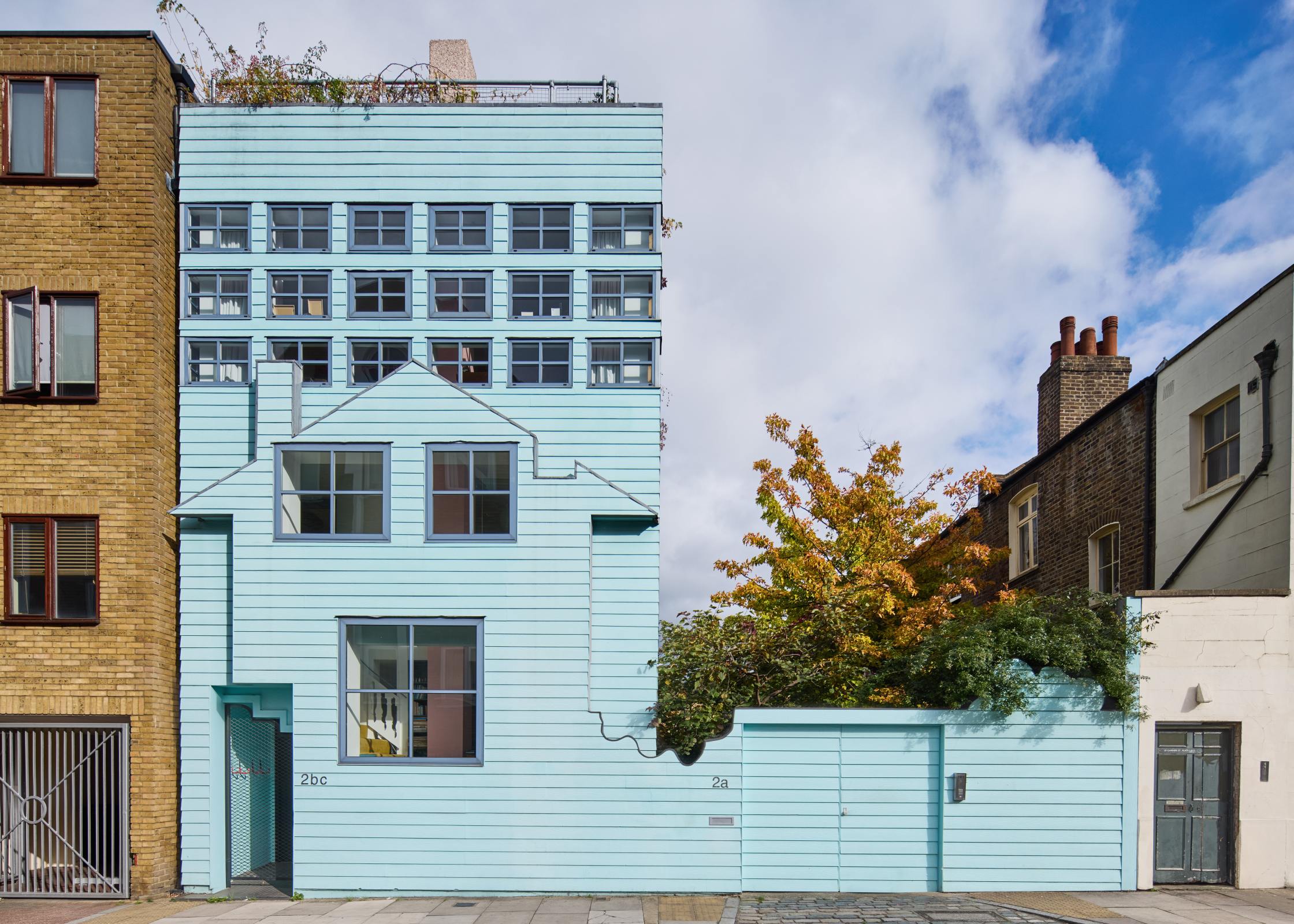 This house in glorious technicolour is the perfect antidote for the grey days of a British winter — so why don't more of us live in brightly coloured homes?
This house in glorious technicolour is the perfect antidote for the grey days of a British winter — so why don't more of us live in brightly coloured homes?It's not often that you see a home sporting the colour palette that you'd get if you hired a four-year old as your interior designer. But why not? The Blue House in Bethnal Green asks this and many more questions.
-
 How common are you according to Nicky Haslam? Take our quiz
How common are you according to Nicky Haslam? Take our quizToday's quiz takes a detailed look at Nicky Haslam's annual list of things he finds common, and sells on a Christmas tea towel for £50.
-
 If chess is 'the supreme board game', then it deserves to be played on boards like these
If chess is 'the supreme board game', then it deserves to be played on boards like theseChess sets and backgammon boards are a familiar sight on drawing-room tables, but one expert Highland woodworker is refashioning their forms in beautiful new ways.
-
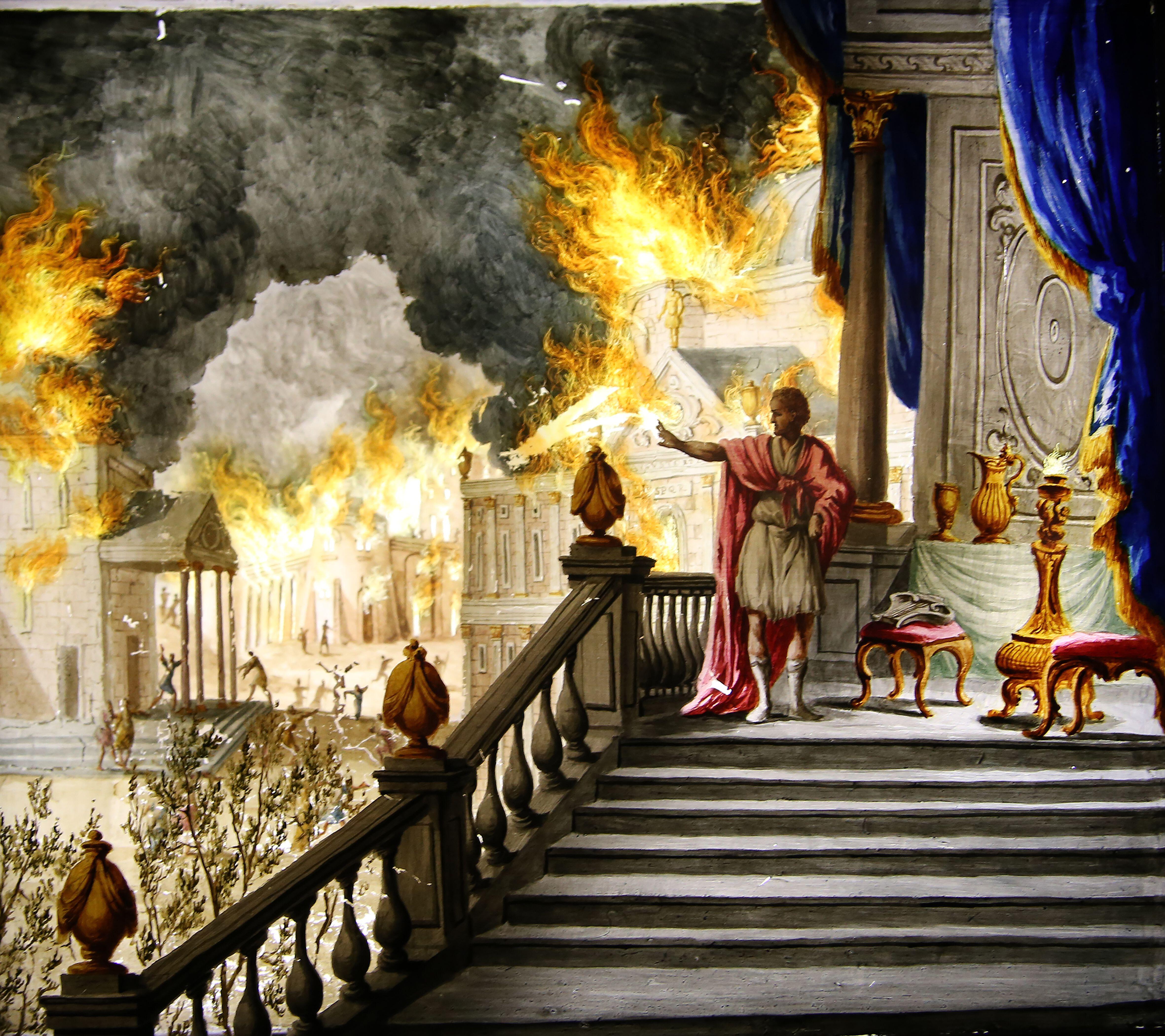 What is everyone talking about this week: Thanks to modern-day technology, people were far happier in the days when Nero was setting Rome ablaze
What is everyone talking about this week: Thanks to modern-day technology, people were far happier in the days when Nero was setting Rome ablazeWas the ancient world's superior happiness down to its ‘superior production of art’?
-
 A slick looking off-roader that's a far cry from its rustic rural roots — Volvo EX30 Cross Country
A slick looking off-roader that's a far cry from its rustic rural roots — Volvo EX30 Cross CountryThe latest iteration of Volvo's Cross Country is flashy, fast and stylish. But is that what a Volvo Cross Country is supposed to be?
-
 ‘I cannot bring myself to believe that Emily Brontë would be turning over in her grave at the idea of Jacob Elordi tightening breathless Barbie’s corset’: In defence of radical adaptations
‘I cannot bring myself to believe that Emily Brontë would be turning over in her grave at the idea of Jacob Elordi tightening breathless Barbie’s corset’: In defence of radical adaptationsA trailer for the upcoming adaptation of 'Wuthering Heights' has left half of Britain clutching their pearls. What's the fuss, questions Laura Kay, who argues in defence of radical adaptations of classic literature.
-
 Mark Gatiss: ‘BBC Two turned down The League of Gentlemen six times’
Mark Gatiss: ‘BBC Two turned down The League of Gentlemen six times’The actor and writer tells Lotte Brundle about his latest Christmas ghost story, discovering Benedict Cumberbatch — and his consuming passions.
-
 Wildhive Callow Hall hotel review: I felt like a squirrel preparing for hibernation and I loved it
Wildhive Callow Hall hotel review: I felt like a squirrel preparing for hibernation and I loved itThe boutique treehouses at this Derbyshire getaway are the best way to unwind in nature and explore the Peak District, writes Lotte Brundle.
-
 Who buys flowers in the middle of the night? Boris Johnson, panicked brides, drunk people and London’s wealthiest inhabitants
Who buys flowers in the middle of the night? Boris Johnson, panicked brides, drunk people and London’s wealthiest inhabitantsLotte Brundle visits the 24-hour central London florist where the flowers don’t sleep.
-
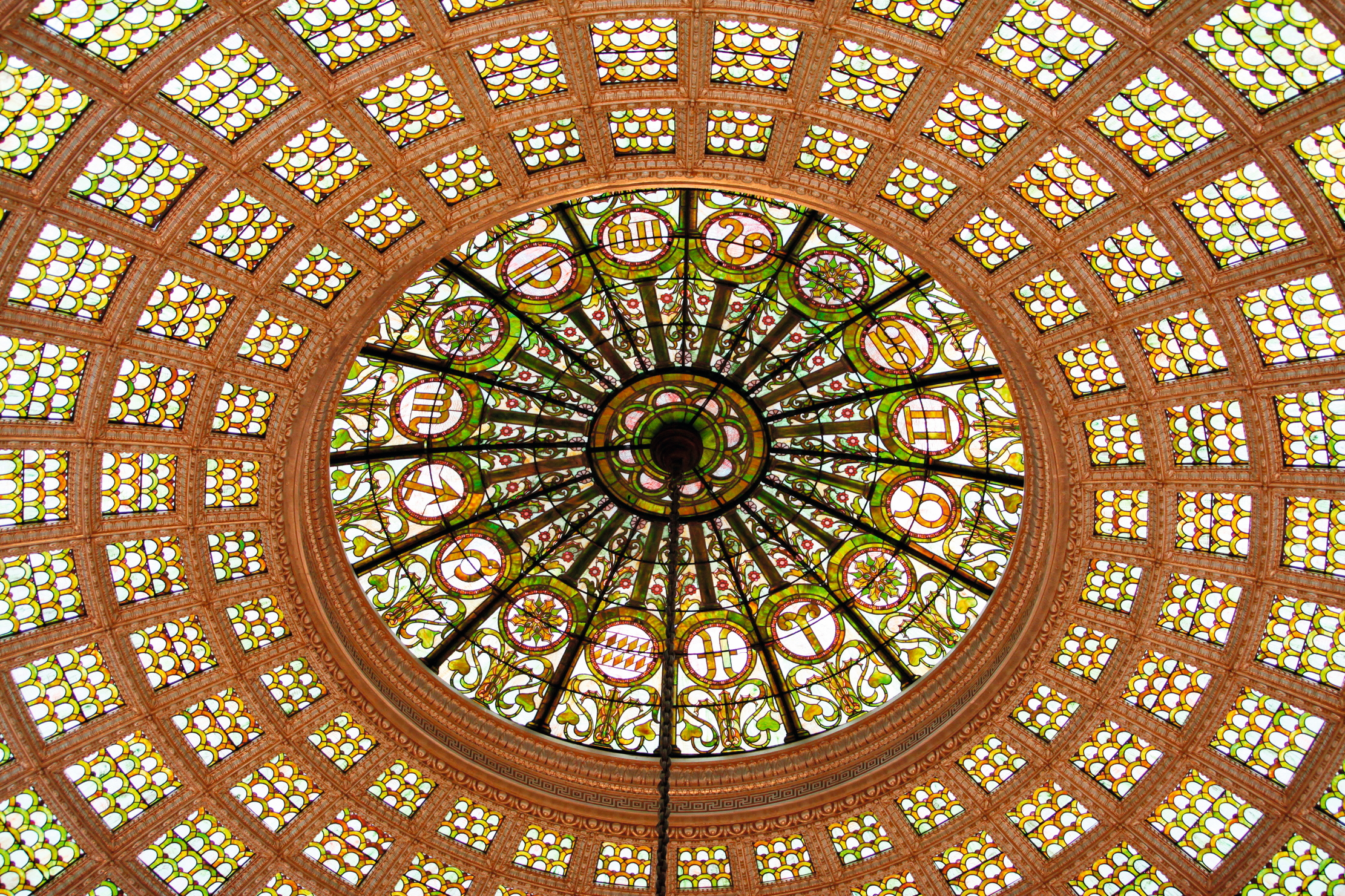 'Gems of enflamed transparencies, of bottomless blues, of congealed opals': Why glass was perfect for the elemental experimentalism of Art Nouveau
'Gems of enflamed transparencies, of bottomless blues, of congealed opals': Why glass was perfect for the elemental experimentalism of Art NouveauArt Nouveau masters such as Louis Comfort Tiffany and Émile Gallé turned the most fragile of materials into iridescent masterpieces that shimmered like seashells or glittered like Byzantine mosaics.
